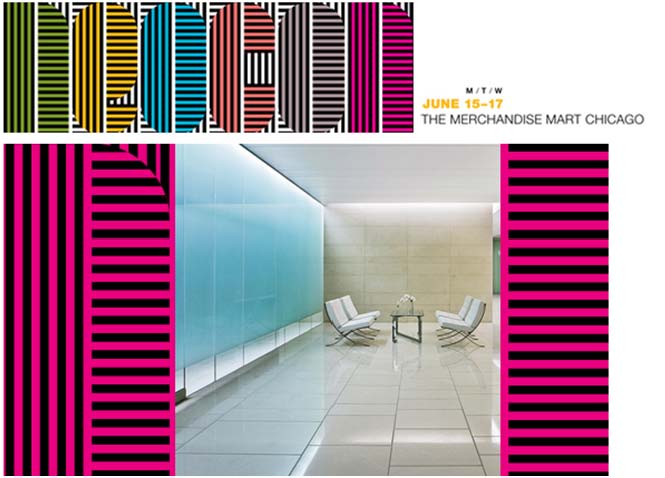
The beautiful, green city of Chicago just hosted NeoCon World’s Trade Fair, where the American Society of Interior Designers (ASID) partnered with NeoCon in hosting its annual conference. It was a great success, bringing together the residential and commercial interior design communities under one enormous roof at the Chicago Merchandise Mart, which, by the way, is a LEED-EB silver-certified building.
As one of many, I enjoyed speaking to designers about eco-friendly residential products. The bonus for me was the opportunity to attend several remarkable seminars presented by friends in the green building industry. Today I have to share the most memorable!
True to his nature, Eric Corey Freed from Organic Architect further ignited my zeal for sustainability, turning my fiery passion into an inferno as he stirred the room with his convictions to start a “revolution.” (I think you already have—thank you, Eric!)
He challenged us to question the status quo of the conventional building industry, likening it to Sisyphus from Greek mythology. Sisyphus defies the gods, who when he is finally captured decide on his punishment: He will have to push a rock up a mountain for all eternity; when it reaches the top, the rock rolls down again, and Sisyphus must begin again.
Like Sisyphus, the current methods in the building industry are oddly outdated, yet executed again and again. “Does the realization of the futility of life require suicide?” asked Albert Camus in The Myth of Sisyphus. “No. It requires revolt!”
I wholeheartedly agree with Eric that now is the time for a revolution of grand proportions. We have to take it beyond the choir rousing a mainstream revolution. We have proven strategies to build sustainably, so why wouldn’t everyone want a high-performance, healthy, nontoxic home that doesn’t need to cost more? Indeed, why aren’t we insisting upon it?!
Eric shared excerpts from The New York Times questioning the future of suburban neighborhoods and the potential for them to turn into slums. People are abandoning their homes because they can no longer afford them. Because house sizes have doubled over the past 50 years—using more land, resources, and energy while producing greater amounts of waste and greenhouse gases—owners cannot afford to maintain and operate them properly.
Suburban neighborhoods cater to cars first and people second. Straight roads with speed bumps are common designs, rather than meandering thoroughfares that, by design, slow down traffic and create a delightful experience. What happened to front porches, victory gardens, bike paths, parks, and accessible mass transit supporting the healthy connectivity of the community?
So by now you are wondering what this has to do with parking lots! Eric gave a great comparison that struck a chord with me. Walmart stores and parking lots surpass the size of Manhattan by 3,000-plus acres. Walmart buildings and parking lots cover 18,810 acres vs. Manhattan’s 15,000 acres of multiuse living and working space. (Source: Klaus Leidorf and Good magazine)
Now there’s some food for thought!
Eric’s final suburban revolt focuses on the need for changing codes. What if:
- Lawns were banned and we planted victory gardens again
- There were no straight streets or road signs (studies show that people drive more slowly where there are no stop signs and on winding roads)
- Over-the-counter solar permitting was available to everyone (California is on its way)
- Corner stores were demanded by the community through the use of eminent domain
- Porous paving was required for paved lots (we’d bring back a slice of paradise)
- Local developers were celebrated and encouraged
Along with Eric, I invite you to take a stand. Choose to educate your peers and neighbors, or start a community revolution to bring back the quality of life that the world emulates. Pick your favorite issue and run with it, become the expert, and limit compromise. Or ,what if everyone in your community purchased a “smart” power strip to eliminate phantom energy loads. Imagine taking the annual savings and celebrating with a block party. Now that sounds like paradise!
Thank you Eric, it was great to hear and see you again.
Weekly Newsletter
Get building science and energy efficiency advice, plus special offers, in your inbox.











0 Comments
Log in or create an account to post a comment.
Sign up Log in